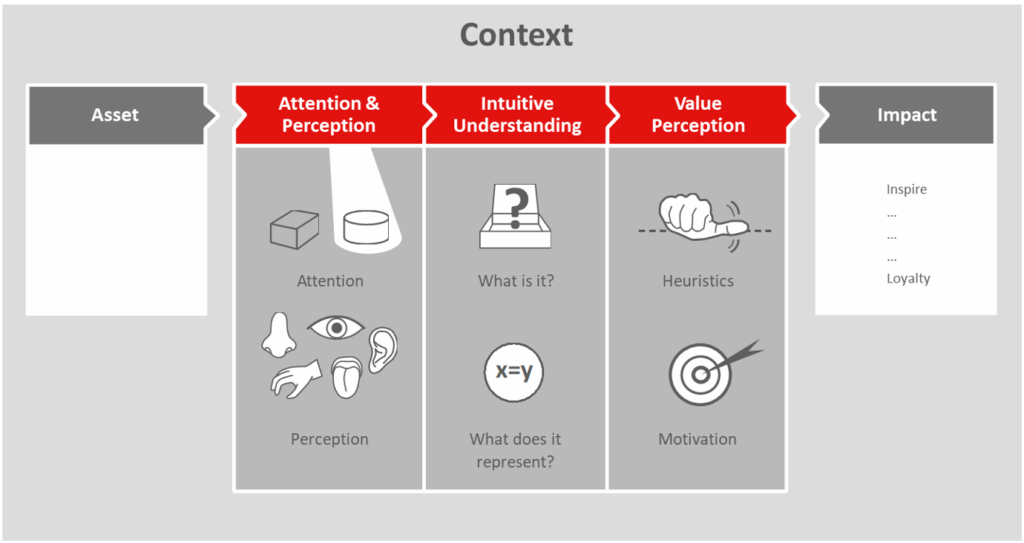Great marketing starts with the customer. To be able to create and deliver great marketing you need to fully understand consumer psychology and why people are motivated to buy in the first place. I am a great fan of Phil Barden. His book Decoded provides terrific insight into the mindset of the consumer. From there you have a very strong foundation to establish marketing best-practice.
In a short blog post, I cannot do justice to the topic of Decision Science and frankly I am not qualified to do so. This topic requires time and investment to establish a thorough understanding. However, the basic premise will be enough to make you think twice about how you capture the hearts and minds of your consumers.
Phil has a simple graphic that he uses (please see below). I hope he doesn’t mind me sharing it! This provides the broad stages that a consumer goes through when engaging and interacting with a brand or product.
In addition, this engagement will be heavily influenced by the context of the consumer; what they are thinking and doing at the precise moment of interaction.

Behaviour = Person x Situation. Something that resonates with me and / or … my Jobs-To-Be-Done in that moment.
Phil Barden
So how does this translate to great marketing?
Overlay onto this framework, the three elements that are the cornerstone to great marketing:
- Distinctiveness = Attention, Perception
- Differentiation = What is It?, What does it represent?
- Desirability = Heuristics, Motivation
Being distinguished
Being distinguished is about standing out in your market. To achieve this:
- continuously reach your audience through both communication & distribution.
- grab attention.
- be available and easy to buy
- always be consistent in everything you do.
- apply sensory cues that highlight an aspect of your offer that evokes a response or a certain pattern of behaviour.
Read Byron Sharp’s book How Brands Grow to better appreciate why this is so important and how to maximise distinctiveness.
Highlighting differentiation
Being differentiated is about putting distance between your offer and that of your competitors. Achieve this in a way that explains and highlights how you are better able to meet their goals. It is part of being distinctive but it is also part of creating a position where consumers can clearly see where your advantages are across all aspects of your offering including:
- brand perception.
- product benefits.
- distribution & fulfilment.
- etc.
Please take a few minutes to read Mark Ritson’s post on ‘Distinctiveness doesn’t need to come at the cost of differentiation’. He can explain this far better than me.
Increasing desirability
Being desirable is how well you can connect and deliver to the specific goals of the consumer. Understanding and applying consumer heuristics can make consumer decision-making easier. This speeds up the time to purchase. It is about reducing the friction between discovering your product and buying your product.
B.J. Fogg has developed a Behaviour Model that explains this very well. Couple this with your ability to convey your value and it provides the motivation for consumers to act.
For more insight into Heuristics, see this post from the Paleo Foundation
“Human judgments are limited by available information, time constraints, and cognitive limitations”
Herbert A. Simon, Cognitive scientist.
By applying the 3 D’s framework, every marketer will place more focus on what is important to the consumer rather than what is seen to be important from an internal brand perspective. The end result? You will deliver GREAT marketing.
